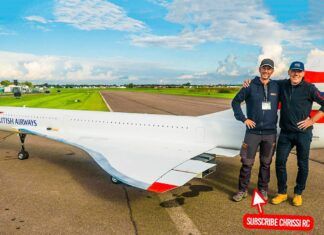In recent weeks, the MD-80 fleet worldwide has been hampered by reports of engine cracks. In Japan last month, 17 of the airliners were grounded after engines of two aircraft vibrated, and the flights were aborted. According to CBS news, Chicago, American Airlines discovered similar cracks in engines on some of its MD-80 planes. Other reports declare all U.S. MD-80 aircraft safe in this regard. However, “Routine airline maintenance procedures don’t usually … reveal cracks of this nature,” Mary Frances, with Americans maintenance program, told CBS news.
During a test flight in 1980, a McDonnell-Douglas DC-9-80 (a precursor of the MD-80) blew its nose wheel tires and broke its tail off. The intended test called for a rate of descent at touchdown close to 700 fpm coupled with strong back pressure 0.5 seconds after landing, plus full braking. The fuselage flexed and failed. The purpose of the test was to determine the horizontal distance required to land and bring the aircraft to a full stop, according to the NTSB report on the incident. On approach, the pilot failed to stabilize the descent and touched down at a rate that exceeded the structural limits of the aircraft, the NTSB said. The pilot of the tail-less, nose wheel-less aircraft used main wheel braking and (because the engines survived) reverse thrust to stop the aircraft. The report details that the extremely narrow performance range that would allow the pilots to fly the profile safely left an inadequate margin of safety, and suggested that the test procedure should be reviewed. The aircraft was on a certification flight at Edwards Air Force Base in California. One engineer on board suffered a broken ankle in the accident, but the other six crew members were unhurt.
Click through to witness the egregiously hard landing. (Note: this video is a 1.5Mb Sparkle MPEG file, may not be compatible with all computer platforms and is not recommended for slower connections.) The NTSB report (320K pdf file), including the parameters of the test and detailed anaylisis on the results is available, here.

































